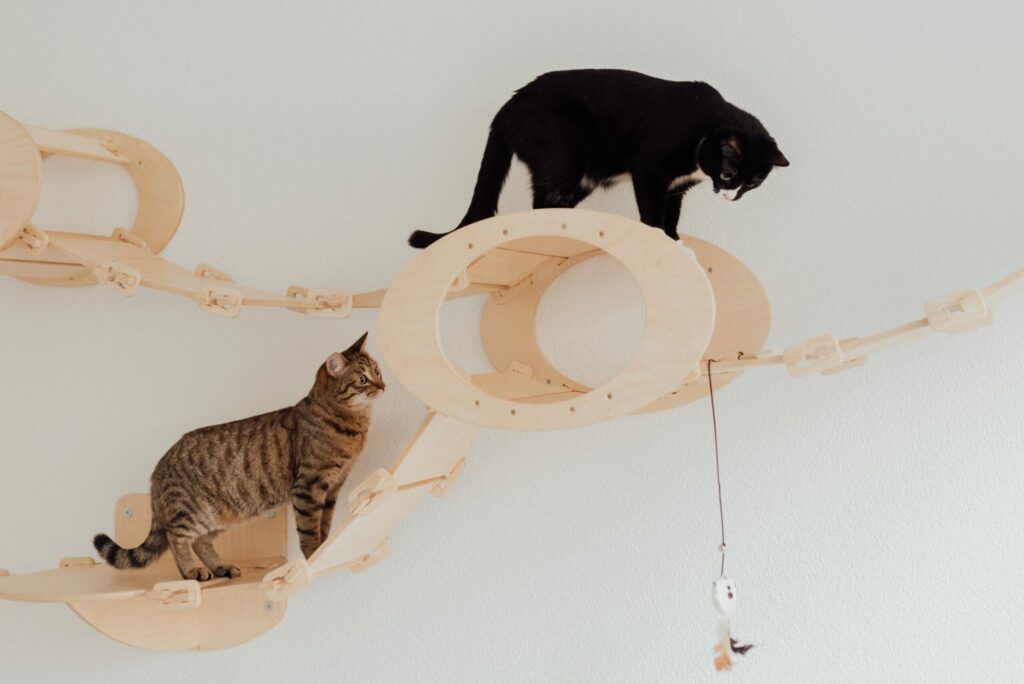One of the most memorable moments for a human companion and his furry friend is definitely the day when they were able to successfully teach their pets a wonderful trick. Be it a simple twirl, fetch, catch, run, sit, roll, nothing beats the feeling of creating a connection with your animal bestie. Knowing that your cat was able to understand what you were trying to say, more so do whatever it is you’re asking them to do, is just both fulfilling and joyful.
Teaching our furry pals tricks is a joyful trip that opens up a world of enchantment and connecting beyond what is typically thought of as cat behavior. Despite the widespread misconception that cats are untrainable, with the right encouragement and patient direction, these perceptive and intelligent animals can be made to demonstrate their natural talents. A little imagination, some delicious goodies, and a big helping of understanding your cat’s individual personality go a long way toward making the art of teaching tricks more than simply an impressive show of skills; it becomes a celebration of mutual trust and communication between the tutor and the furry student.
Most common tricks for a cat include, sit, stay, high five, lie down, roll over, and many more. The question is, how do we successfully teach these to our little friends? How do we make them understand what we are trying to say, what we are trying to make them do and how they can retain it to their memory? It is very important to recognize that every cat is different and that some can require more time than others to learn new skills. Be patient, and change your expectations in response to your cat’s comfort level and growth. That said, here are some effective ways in ensuring that you are able to take your bonding moments with your cats to the next level.

- Start with basic commands
Start with basic commands that your cat can easily comprehend. Use commands like “sit,” “stay,” or “come,” for instance. Before going on to trickier moves, continuously reinforce these fundamental commands.
- Find the perfect place and time
Choose a space that is calm, cozy, and conducive to your cat’s concentration and relaxation. Steer clear of environments or sounds that could distract them.
- Ready the equipment and tools needed
For a number of reasons, getting the supplies ready before beginning to teach your cat skills is crucial. This proactive strategy guarantees a more efficient and successful training procedure.
- Short and Sweet training sessions
Training sessions should be brief—ideally lasting five to ten minutes—in order to keep your cat interested and avoid frustration. A prize is always a good way to wrap things up.
- Practice Clicker trainings
In clicker training, the desired behavior is marked with a clicker and then rewarded with a treat. This technique makes training more effective for cats by helping them associate the click sound with a reward.
- Lots of encouragement and positive reinforcements
Positive, incentive-based training is what cats should receive. Do not resort to punishments because they may be detrimental to your cat. Stressed-out cats are more prone to problematic behaviors like spitting outside of their bowl of litter, overindulgent meowing, destruction such as furniture scratching or gnawing
Since every cat learns differently, make sure to give your cat lots of praise before advancing to the next trick. This encompasses compliments, cuddles, and food. Your cat will continue to focus on you as a result and would be more motivated in learning new tricks you teach them.
- Reward them with great treats

Maintaining your cat’s motivation while teaching it new tricks might be challenging. Providing your pet with the appropriate reward plays an important role in the entire process. Something that promotes your cat’s collaboration is a motivator for them. Your cat should be completely focused throughout the entire training session if you have the correct motivation.
When educating animals, consistency is essential. You may make sure that your cat gets instant positive reinforcement whenever they exhibit the desired behavior by prepping treats and rewards. This constancy helps your cat understand what’s expected of it by reinforcing the link between the trick and the reward.
- Practice and Repeat
Maintaining consistency is essential. Regularly repeat the training sessions, progressively adding new techniques while consolidating previously taught ones. Your cat will pick up desirable actions more quickly if you are more consistent and you continuously expose them to your desired outcome.
- End on a positive note
Even if improvement is gradual, always end training sessions with a good attitude. By doing this, you can encourage your cat to identify training with good things, which will increase their willingness to attend sessions in the future.
It’s important to respect your cat’s own personality and preferences, and keep in mind that not all cats will respond well to tricks. Savor the bonding process with your kitty companion and acknowledge the minor accomplishments during the journey. The skill of teaching your cat new tricks becomes a colorful thread that connects and intertwines happy, compassionate moments. Trick training testifies to the strength of the link between you and your furry friend, even beyond its entertainment value. A language of connection emerges through the little nuances of each skillfully performed trick, reminding us that the joy of friendship is found in the moments spent together learning, laughing, and experiencing unconditional love more than the tricks learnt themselves.









